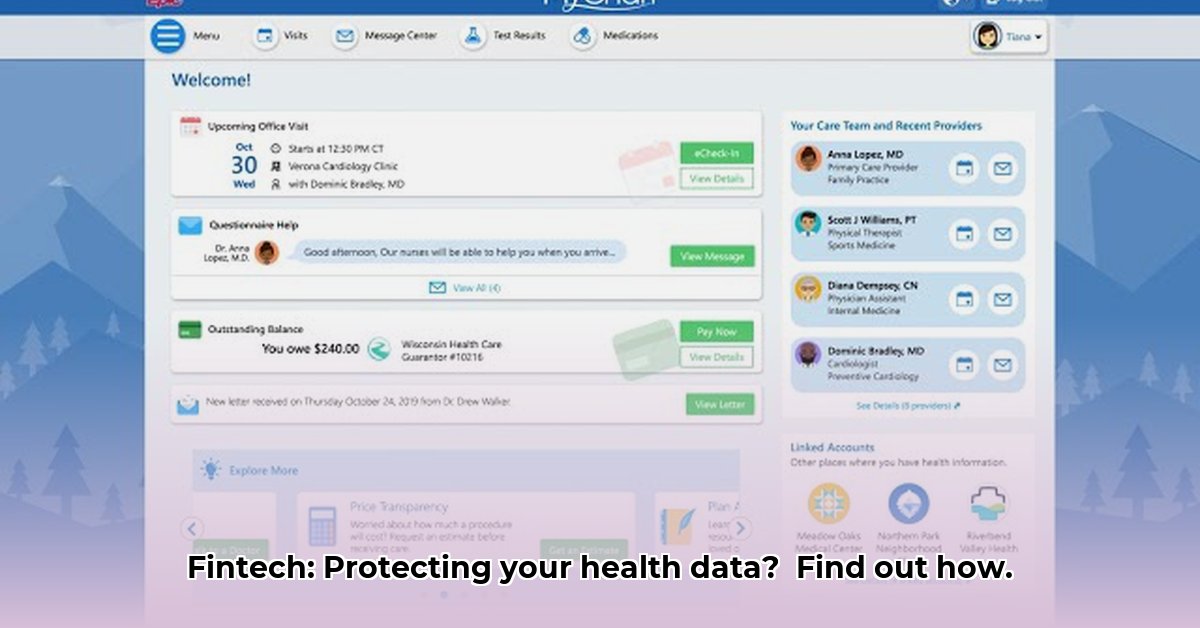
mysecurehealthdata: Protecting Patient Privacy in the Fintech Age
The healthcare industry is undergoing a rapid transformation, merging seamlessly with the world of finance. Fintech solutions offer incredible potential: streamlined billing, readily accessible online medical records, and even AI-powered personalized health advice. This convergence, however, presents significant challenges, primarily concerning the security of highly sensitive patient data. This article explores the vulnerabilities inherent in this digital shift, examines effective protective measures, and forecasts future trends in healthcare data security within the Fintech landscape.
The Promise and Peril of Integrated Healthcare and Fintech
Imagine managing your health as effortlessly as you check your bank balance. This is the enticing promise of Fintech integrated into healthcare. Patient portals enhance convenience, mobile payments simplify billing, and AI tools personalize care. Yet, this convenience comes with significant risks. Each app, online portal, and digital connection point creates a potential entryway for cybercriminals. A single data breach could expose millions of patients’ medical records, resulting in identity theft, financial ruin, and significant emotional distress. This highlights the critical need for robust security measures.
Weak Points in Healthcare's Digital Defenses
Several key areas expose vulnerabilities in protecting mysecurehealthdata:
Third-party Risks: Many Fintech companies rely on external vendors for data management. If these vendors have lax security practices, the entire system is jeopardized. This is akin to entrusting a priceless artifact to an inadequately secured vault.
Outdated Technology: Using legacy software and weak encryption methods leaves systems highly vulnerable. It’s like using a flimsy lock to protect a treasure chest.
Human Error: Even the most sophisticated technology is susceptible to human fallibility. A single employee clicking a malicious link or falling victim to a phishing scam can compromise the entire system. Stronger employee training and security awareness programs are vital.
Poorly Designed Systems: Insecurely designed apps and portals create easy targets for hackers. This is analogous to leaving a building's back door unlocked.
Fortifying Defenses: Steps to Secure mysecurehealthdata
Protecting patient data necessitates a multi-layered approach. Crucial steps include:
Data Encryption: Implementing robust encryption, both for data in transit and at rest, is paramount. Think of this as installing a high-security lock on your digital vault.
Software Updates: Regularly updating applications and security software is crucial. This proactive maintenance is analogous to timely repairs on a building to prevent structural weaknesses from being exploited.
Security Training and Awareness: Comprehensive cybersecurity training for all employees is essential. This empowers them to recognize and report suspicious activities.
Regular Security Audits: Conducting regular security assessments identifies vulnerabilities before they can be exploited. This is like scheduling regular maintenance checks for your digital infrastructure.
Multi-Factor Authentication (MFA): Deploying MFA adds a significant layer of protection. This is akin to requiring two keys for access to high-security areas.
Advanced Threat Detection Systems: Utilizing AI-powered threat detection systems enables real-time identification and response to threats.
Regulatory Compliance: Strict adherence to regulations like HIPAA and GDPR is mandatory. This ensures compliance and provides an additional layer of protection.
The Future of mysecurehealthdata Security: A Collaborative Approach
The future of healthcare data security demands a collaborative effort. Healthcare providers, Fintech companies, and regulatory bodies must work together to establish robust industry standards and best practices. Emerging technologies like blockchain and AI offer potential solutions, but also introduce new challenges. The continuous evolution of cybersecurity threats requires constant adaptation and innovation.
The Ongoing Pursuit of Patient Privacy: A Continuous Vigil
Protecting mysecurehealthdata is an ongoing process, not a one-time project. It necessitates constant vigilance, investment in robust security measures, and a strong organizational culture that values data protection. Neglecting these crucial aspects is simply untenable; the consequences of data breaches are far too severe. The future of healthcare's digital landscape hinges on this commitment to robust security.
How to Ensure HIPAA Compliance for Healthcare Fintech Patient Portals
This section builds upon the preceding points, focusing specifically on HIPAA compliance within the Fintech context. It emphasizes the need for robust technical safeguards (encryption, MFA, access controls, regular audits), strong administrative procedures (risk assessments, HIPAA training, BAAs, incident response plans), and consideration for the unique challenges posed by Fintech integration (seamless integration, secure APIs, scalability). A forward-looking approach is stressed, highlighting the need for continuous monitoring, adaptation to evolving threats, and investment in emerging technologies like AI-driven threat detection.